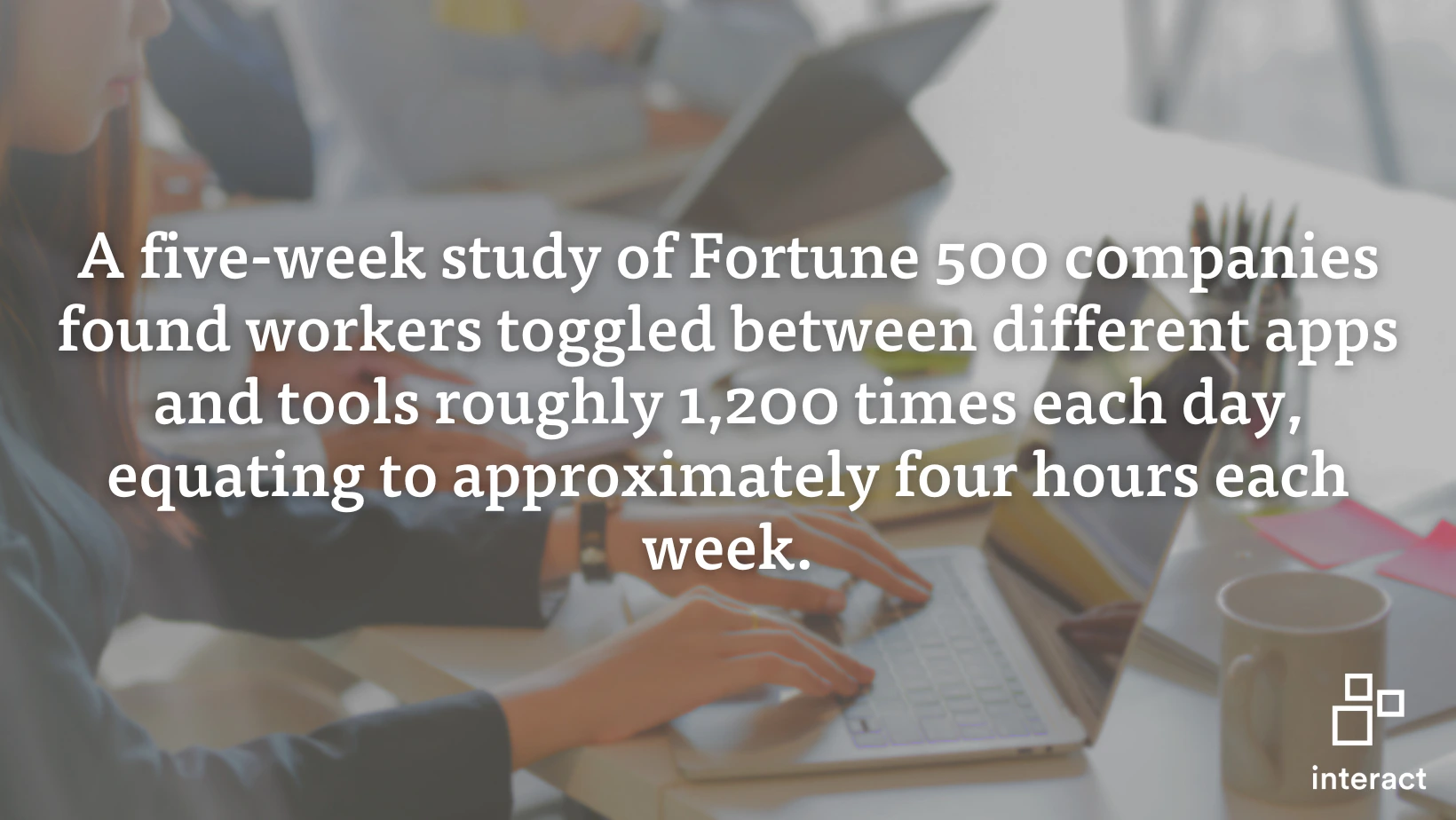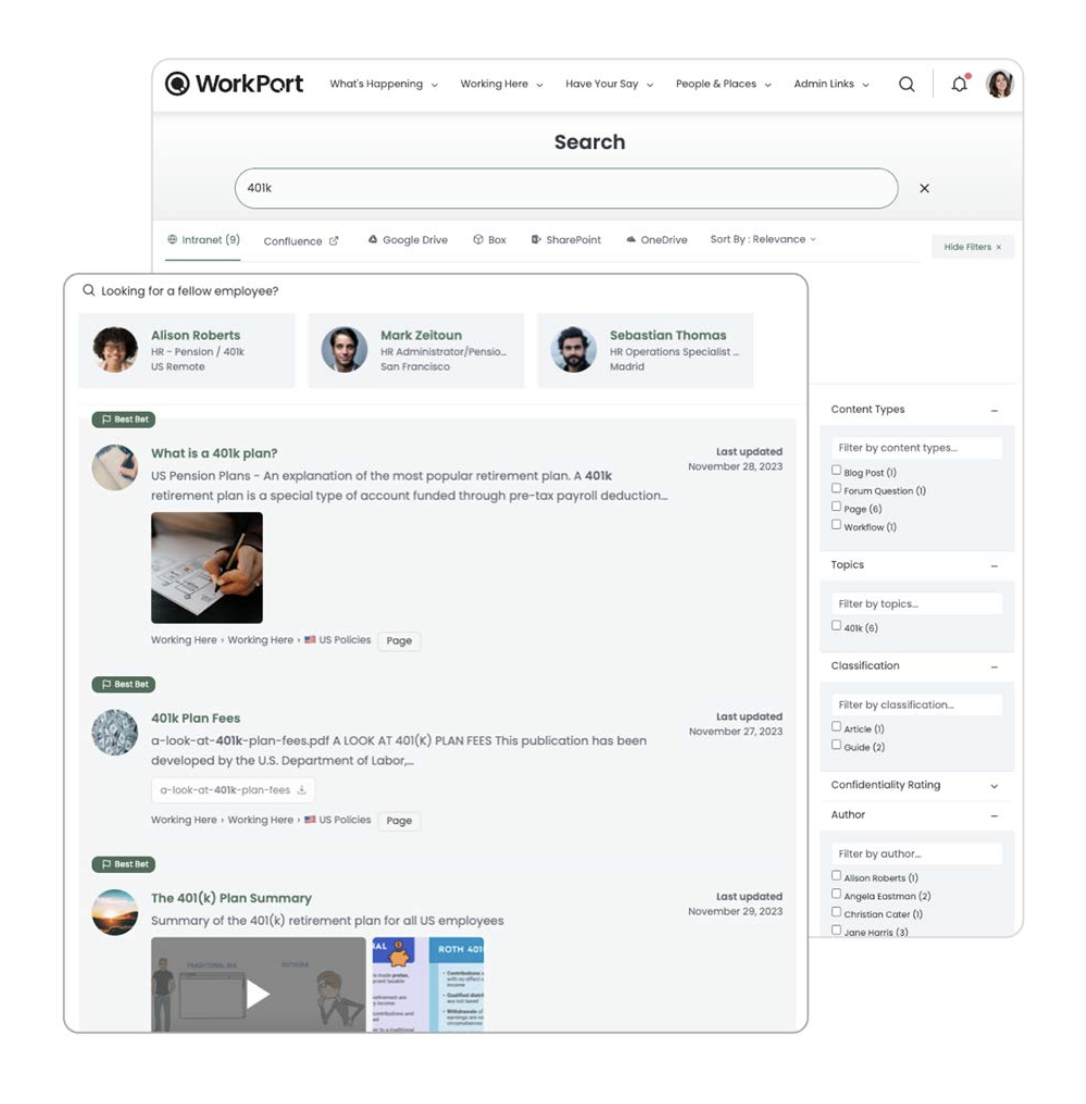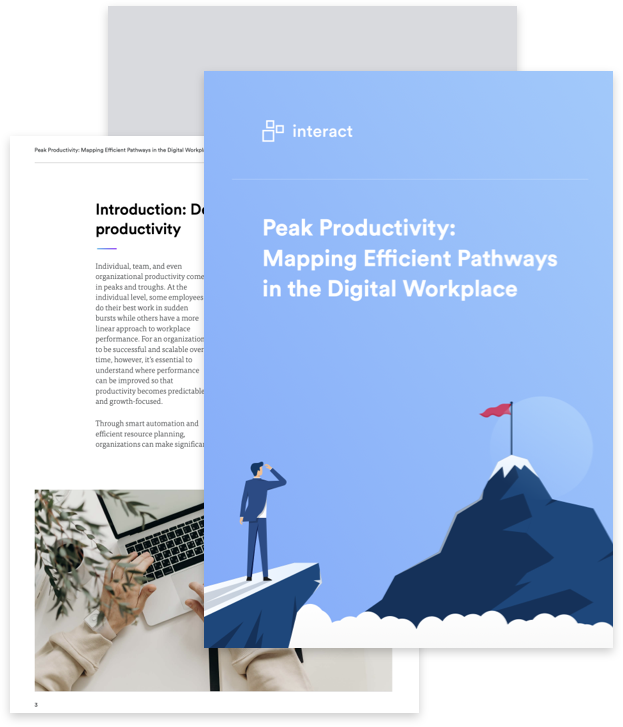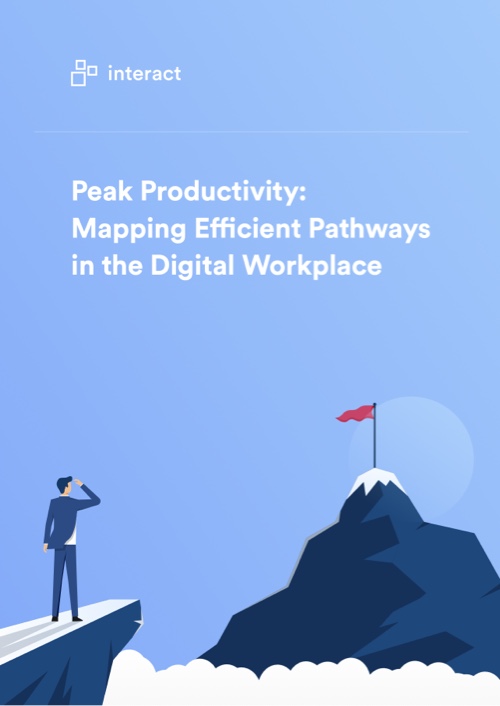Discover why optimizing technology has become a vital requirement for increasing productivity in enterprises. Read about the six steps you can take to ease digital fatigue and boost efficiency in your organization.
For enterprises to achieve successful digital transformations (whether that’s from paper to digital, from on-premise to cloud, or between cloud systems, for example) they need to optimize all the apps they have within the digital workplace. Without technology optimization, your organization is likely to have too many tools performing similar and overlapping tasks. This increases SaaS bloat for the company and induces digital fatigue and confusion in the workforce.
So, while digital transformation promises streamlined processes and increased efficiency, it can introduce a paradoxical challenge where more and more advanced solutions hinder productivity instead of enhancing it.
Employees may find themselves grappling with many tools they have little understanding of, resulting in a fragmented workflow that demands constant adaptation.
You can do something about this, however, and this article contains six steps that will help you centralize and consolidate your digital workplace.
The case for optimizing technology to improve efficiency
If action is not taken to improve the way employees navigate and interact with the platforms and applications they rely on, the minutes can mount up into hours each week. In turn, these unproductive hours can negatively impact the bottom line.

The unintended consequences of a poor digital employee experience (DEX) can include:
- An irritable workforce grappling with apps and documentation
- An internal comms function solely focused on change management
- The HR team dealing with retention issues and a changing onboarding process
- IT managing an increasing mix of new systems
- SaaS bloat and overspending
- Frustration from senior leadership when improvements don’t occur
Reach peak productivity in your enterprise!
To counteract the negative impacts of fragmented digital experiences on productivity, leading organizations now adopt a holistic approach, optimizing technology to create a unified entity rather than a collection of isolated platforms.
It’s this strategic consolidation that drives individual and company performance and makes the relationships between people and platforms efficient and harmonious.
A centralized hub for enhancing the digital employee experience
Having a clear understanding of the digital tools, resources, and communication channels in the digital workplace enables the consolidation of some of those into a centralized hub.
While this will not include every application, it will still be a single home for many of them and is essential for optimizing technology to enhance employee productivity by seamlessly integrating workflows, eliminating information silos, and providing employees with quick, unified access to critical information.
For many organizations, modern intranet software is the connective tissue that ties many of these systems together in a single interface.

A centralized hub also nurtures a culture of collaboration and becomes a catalyst for innovation and shared knowledge with employees finding themselves in an ecosystem where information flows seamlessly, breaking down departmental barriers and fostering cross-functional synergy.
Key considerations for optimizing technology to increase productivity
A digital home lays the foundation for a more cohesive, productive digital experience through accessibility, design, and personalization.
By following the steps set out below, your organization can optimize tech to improve employees’ daily experiences, improve job satisfaction, and increase their efficiency.
1. Accessibility is essential for productivity-focused tech optimization
Ease of access is one of the most important factors to consider when it comes to optimizing technology to facilitate productive digital journeys. Single sign-on (SSO) is a pivotal factor in the accessibility equation.
By enabling users to log in to your centralized platform once through SSO, you may be able to create a single access point that does not force users to juggle a multitude of passwords. SSO is well known as a tool for increasing security and streamlining user journeys.
Reach peak productivity in your enterprise!
Accessibility extends beyond traditional desk-based environments. The importance of seamless access from mobile devices cannot be overstated. A centralized hub optimized for mobile (via mobile web browser, employee mobile app, or both) ensures that employees can stay connected, collaborate, and access essential information anytime, anywhere.
2. Integrations: a must-have when optimizing technology
By integrating many of your enterprise applications with the intranet, you can significantly enhance productivity by curating access in a single space.
Interact can integrate with a multitude of business platforms, including (but not limited to) Slack, Zendesk, ServiceNow, Salesforce, Workday, SAP Concur, Microsoft 365, Google Workspace, and Dropbox.

If your organization relies on a Microsoft 365 infrastructure, selecting any centralizing platform for tech optimization should involve verifying its compatibility with popular M365 applications. This will ensure that intranet integrations are in place to streamline workflows and processes, ultimately eliminating any potential bottlenecks experienced by employees.
Integration between M365 apps and an intranet platform may confer benefits such as surfacing Outlook emails or Power BI analytics within the intranet.
Similarly, organizations that use Google Workspace (formerly G Suite) should ensure their chosen platform delivers seamless access to Google apps including Drive, Calendar, Tasks, and Forms from within their intranets.
3. Use enterprise search to surface results for workplace productivity
Putting the right content into the hands of employees is key to improving productivity. This is achieved by providing a powerful federated search experience across all your intranet content and any linked cloud storage systems.
Research suggests workers spend on average 19% of their working week searching and gathering information. An intranet, as part of an integrated and centralized digital workplace, provides a single, searchable version of truth, reducing time spent searching.
A powerful enterprise search tool will enable users to instantly find content across the whole intranet and connected document management systems. Optimizing technology by removing the time and frustration of finding important information and resources, an intelligent search functionality creates a faster, more appealing digital employee experience.

More advanced systems, such as Interact, use personalized rankings to display the most relevant results for each employee based on individual behaviors, interactions, permissions, and search history.
4. Personalization: a powerful element of tech optimization
Personalization in the digital workplace boosts productivity by customizing tools and experiences based on individual preferences. This creates a more efficient and engaging work environment. Organizations can optimize technology and deliver personalization by utilizing permissions and built-in intelligence, ensuring relevant content is delivered to each employee based on factors including role, location, and personal content preference.
Reach peak productivity in your enterprise!
Interact’s AI-driven recommendation engine facilitates the automatic discovery of new content for employees. Subscribing to content guarantees that crucial updates to essential information are never overlooked and with granular controls, employees can choose the alerts they receive and how they receive them, ensuring that the right content is always prioritized.
Additionally, people who travel between offices, retail stores, or geographic locations need unique resources, and geofencing is an exciting field that is transforming the way employees receive information as they move from one geofenced location to the next.
5. Bring everything together with a human-centered design
A human-centered user experience is pivotal for enhancing productivity in any digital environment.
This technology-optimizing principle can be brought to life through a clean intranet design that strategically organizes building blocks on each page and menu. This user-centric approach, exemplified by a task-driven design, not only facilitates easy access to essential workflows but also avoids overwhelming users with convoluted navigation menus, ensuring a seamless and efficient digital employee experience.
Helping employees find what they need easily can be as simple as grouping content within menus or giving popular pages or content areas a prominent position. It’s also worth considering replacing quick links with HTML widgets for a more impactful visual experience.
In essence, this means using a clickable image or icon instead of a standard text link, with a text overlay on the image, to show users exactly what the image is pointing to. This will help users find and identify important routes to the content, resources, or applications they need quickly and easily.
Online forms streamline business processes (such as submitting expenses), which saves valuable employee time and improves information accuracy. Interact’s Workflow & Forms feature employs a user-focused design that allows non-technical people to create simple, easy-to-build forms, supporting efficiency by removing the need for IT support.
6. Multichannel communication is a must
Multichannel communications can significantly enhance employee productivity by providing diverse avenues for information dissemination.
When these communications are managed and deployed from a centralized platform such as a modern intranet, each form of “push” communication can direct or “pull” employees back to the intranet for further information and resources, regardless of how they receive an alert that there is something they need to see.

Offering a variety of communication channels helps overcome communication barriers. Different individuals may have different communication preferences, and providing multiple channels ensures that everyone can engage in a way that is most comfortable and effective for them.
Real-time updates deployed across instant communication channels such as Slack and Teams can facilitate prompt information sharing, addressing time-sensitive matters and preventing delays that might inhibit productivity.
Incorporating mobile channels via an employee mobile app allows employees to stay connected and engaged whether they are deskless workers or on the move, promoting continuous access to communications at their fingertips.
Ready to enhance productivity in your enterprise?
For CIOs and other senior leaders, it has become an ongoing challenge to ensure that employee productivity is not hindered by navigating the growing labyrinth of tools and platforms.
The centralizing power of a modern intranet solves this issue by expediting access to apps, resources, and communications while also tailoring DEX using specific parameters such as role, location, and personal preferences.
Through this technology optimization, employees can achieve more through the clarity and convenience of smarter and more seamless digital journeys.
At its simplest, employees can find everything they need to do their jobs more effectively without having to spend hours searching or emailing IT and HR with the same questions.



